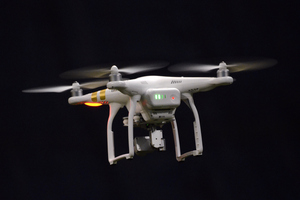Source: UAS Magazine, By Patrick C. Miller | March 03, 2016
The U.S. Federal Aviation Administration (FAA) last week announced the formation of a committee for rulemaking on micro unmanned aerial systems (UAS), but a UAS attorney questions whether the new rules will be ready within the next year.
“I saw a couple of news stories that made it sound like this was a positive step in terms of speeding along the implementation of micro UAS,” said James Mackler, an attorney with the Frost Brown Todd law firm in Nashville who specializes in UAS law. “That’s not what’s happening at all—it’s the opposite.”
The FAA said it was taking the action to “provide a more flexible, performance-based approach” than previously considered for micro UAS. The committee is expected to begin meeting in March and issue a final report on April 1. The Association for Unmanned Vehicle Systems International (AUVSI) has accepted an invitation to serve on the committee.
“The short deadline reinforces our commitment to a flexible regulatory approach that can accommodate innovation while maintaining today’s high levels of safety,” said Anthony Foxx, U.S. transportation secretary.
According to the FAA, rather than focusing on a weight class for micro UAS, it will determine which drones are safe to fly over crowds through a performance-based standard. It will consider human injury thresholds, hazard and risk assessment methodologies and acceptable levels of risk for those not involved in the operation.
FAA Administrator Michael Huerta said, “Based on the comments about a ‘micro’ classification submitted as part of the small UAS proposed rule, the FAA will pursue a flexible, performance-based regulatory framework that addresses potential hazards instead of a classification defined primarily by weight and speed.”
The FAA said the micro UAS committee would be modeled after the UAS registration committee which was formed in October of last year and issued recommendations the following month. The UAS registration process was launched in December 2015.
However, while Mackler believes that looking at rules for micro UAS is a positive step for the FAA, he isn’t optimistic that the regulations will be expedited in a similar manner. He also noted that the agency’s current drone registration rules are now being challenged in court.
“The FAA is going to form a committee to make a recommendation to be put into the proposed rules to take comments to be considered to be released as final micro UAS rules,” he explained. “It’s a longer, more circuitous process than most people realize.”
Mackler also noted that at this point, he doesn’t know enough about the rules the micro UAS committee might recommend to make an informed comment about them.
“They said they wanted the committee to recommend performance-based safety standards and they want to figure out safe ways to fly over non-participants, which sounds good in general terms,” he said.
“But until the committee comes out with its recommendations and we see an NPRM (notice of proposed rulemaking), I don’t feel like there’s anything to comment on,” Mackler continued. “I don’t know what they’re proposing. There’s just a proposal to have a committee to create a proposal.”
Committee members will be appointed by Earl Lawrence, director of the FAA’s UAS Integration Office. The committee will be co-chaired by Nancy Egan, 3D Robotics general counsel.

